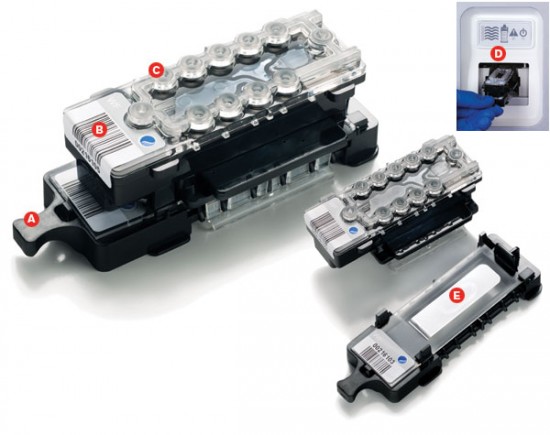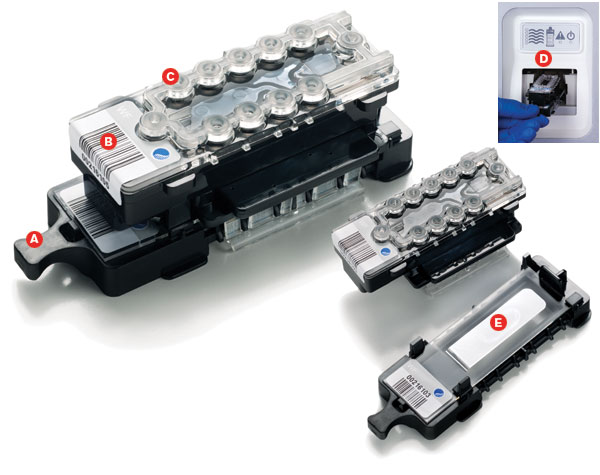Rewriting Life
Personalized Medicine on the Spot
A new device can rapidly test biological samples for genetic variations that could cause dangerous reactions to some drugs.



Different people can react to drugs in different ways, and in some cases the response can be predicted from their genes. For example, the drug warfarin, often used to prevent blood clots, can cause dangerous bleeding in some patients. Researchers have identified two genetic variations that can increase this risk.
Tests for this type of individual genetic variation have been available for a long time, but in many cases they cost too much and take too long. Nanosphere, a startup out of Northwestern University that’s based in Northbrook, IL, hopes to change that. Its Verigene system, which takes just a few hours to analyze DNA from blood or other material, allows doctors to test for genetic variations without having to send samples out to a lab.
A single-use cartridge uses a combination of chemical reactions to isolate fragments of DNA from a patient sample and test them for specific genetic characteristics. The top half of the cartridge is discarded after this process is complete, leaving a prepared glass slide behind.
To help keep track of samples, a bar code is printed on the test cartridge and the underlying slide.
The necessary ingredients for the chemical reactions used to process the DNA are stored in wells located around the edges of the test cartridge. After the DNA is extracted from a sample, the machine uses air pressure and mechanical valves to release the ingredients from the wells as needed. Strands of DNA that are complementary to the target sequences are used to bind those sequences to the glass slide below the cartridge, as well as to gold nanoparticles that will allow the DNA to be detected when exposed to light. The cartridge washes away any excess DNA or nanoparticles and then sets off a reaction that coats the remaining nanoparticles with silver, which makes it easier to scan for them.
A DNA sample is loaded into the port shown here. Sonic energy, applied when the cartridge is inserted into the machine that processes the samples, breaks the DNA into small fragments and separates it into its two complementary strands so that it can be captured on the surface of the glass slide.
After the chemical reactions have finished, the target DNA remains on the surface of the prepared glass slide, tagged by silver-coated gold nanoparticles. The Verigene’s reader can read the slide by shining light into it and measuring how that light is scattered by the tagged DNA. The system can be used to look for single or multiple genetic targets.